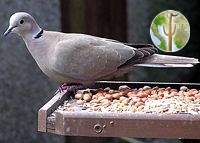Buffelgrass-invaded hillside
Buffelgrass loves south-facing hillsides in the Sonoran Desert, especially in Sonora. In some cases it replaces nearly all native vegetation except older trees and cactus that persist from before the invasion took place.
Buffelgrass loves south-facing hillsides in the Sonoran Desert, especially in Sonora. In some cases it replaces nearly all native vegetation except older trees and cactus that persist from before the invasion took place.
This area was cleared and tilled for buffelgrass. Now it is a virtual monoculture of buffelgrass, which provides poor forage for cattle, the whole point of the operation.
By Garry Rogers
(First in series on Sonoran Desert invasive plants.)
Invasive species, like storm troopers leading the surging ruin of global warming, are demolishing Earth's ecosystems.
This base was dropped into the middle of nowhere in Cabeza Prieta at a place called Papago Well, and has heavy impact on the local flora and fauna.
TDF and thorn-scrub are often cleared to make way for planting of non-native buffelgrass (Pennisetum ciliare) for cattle forage. Calumnar cactus are often left, but do not always survive. Generally there will not be recovery to TDF. Sometimes a monoculture of Acacia cochliacantha can eventually invade cleared areas if it can outcompete beffelgrass and the area isn't burned or re-cleared.
 Buffelgrass has become well known as an invasive exotic species, but many other dangerous exotics threaten parts of the southwest and have garnered much less attention.
Buffelgrass has become well known as an invasive exotic species, but many other dangerous exotics threaten parts of the southwest and have garnered much less attention.